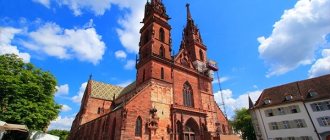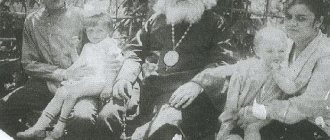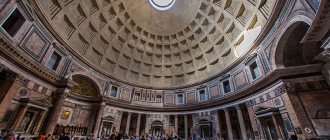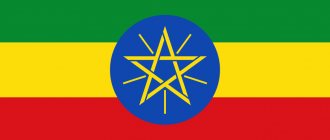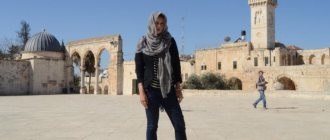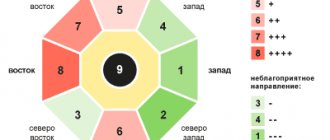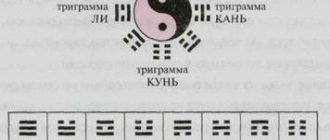To help pilgrims from Russia who want to venerate the main Christian shrines, we provide a list and description of places to visit, a description of the relics and how to get to them. For those who prefer to devote the whole day or several days to pilgrimage, we indicate possible options for combining several objects, taking into account their geographical location. When ordering an individual traditional excursion, for example from Paris to the castles of the Loire or Champagne, you can also include in the program a visit to the holy relics that are located in the area.
France found itself under the jurisdiction of the Catholic Church after the schism of the Churches in the 11th century
Orthodoxy in France in its modern form appeared in the 19th - 20th centuries, when a stream of immigrants from Orthodox countries rushed to this country due to various historical events.
If we recall the history of France itself, we can note that until the 11th century, when a split in the Churches occurred, the French dioceses were part of a single Christian Church. After the schism occurred, the entire territory of this state came under the jurisdiction of the Catholic Church.
Martyrdom of Saints Dionysius the Areopagite, Rusticus and Eleutherius. Miniature from the Minology of Basil II. 11th century
The baptism of France took place in 496, while Orthodoxy influenced it long before this date. Even before the reign of the first Christian king Clovis, the first preachers of Christianity appeared in ancient Gaul.
Church tradition says that the first bishop of Lutetia (Paris) was the Greek Dionysius the Areopagite. He suffered martyrdom on the Montmartre hill.
Numerous ascetics, saints and theologians born on French soil are still remembered in the Orthodox East.
Non-canonical structures
- The Catholic Orthodox Church of France (Église catholique orthodoxe de France) is a Western rite jurisdiction, for some time it was part of the ROCOR, the Romanian Patriarchate
- French Orthodox Church (French) Russian. (Église orthodoxe française)
- Macedonian Orthodox Church (European Diocese)
- Orthodox Church of the Gauls (French) Russian. (l'Église Orthodoxe des Gaules)
- Celtic Orthodox Church (French) Russian. (l'Église Orthodoxe Celtique)
- ROCOR (V-V) (Marseille and Western European Diocese)
- ROCOR (Agafangela) (Lyon and Western European Diocese)
- RTOC (Western European Diocese)
Russian Orthodoxy appeared in France in the 17th - 18th centuries
As for Russia, the Russian Orthodox Church, for obvious reasons, did not conduct any activity on French territory until the 17th and 18th centuries.
1727
this year the first Russian Orthodox priest arrived in Paris
The first mention of a Russian Orthodox priest arriving in Paris dates back to 1727. At that time, Priest Daniil Yakovlev was at the Russian embassy. He arrived in the capital of France in the retinue of the Russian envoy.
With Yakovlev's arrival in Paris, divine services began. After 11 years, in 1738, the ambassador asked to appoint a permanent priest attached to the embassy. He became priest Andrei Genevsky.
His candidacy was chosen because he was distinguished by sober behavior and had an education that allowed him to represent the Russian state abroad with honor.
Camping church of the 18th century (possibly a monstrance). Approximately such a camp church was sent to Paris in 1757 so that the Russian embassy in France could be spiritually nourished
In 1757, a marching church had already set off for the capital of France. It corresponded to the embassy level. The utensils for her were made of silver, and the robe was made of expensive brocade. The iconostasis was made on blue satin, the inserts were painted with gold paints.
Hieromonk Joseph (Shestakovsky) of the Alexander Nevsky Lavra was appointed priest in the camp church. This choice was due to the fact that the hieromonk had a good education and knew foreign languages.
Church-monument of the Resurrection of Christ (Saint-Hilaire-le-Grand)[edit]
The church was built on the initiative of the Union of Officers of the former Expeditionary Force of the Russian Army in France. Expeditionary Force of the Russian Army in France and Greece (Expeditionary Corps, Russian Expeditionary Force) is the general name of the expeditionary forces (formations, brigades) of the Russian Imperial Army that participated in the First World War on the territory of France and Greece, on the initiative of two states within the framework of international assistance and exchange between two Entente allies.
A special construction committee quickly collected the funds necessary for the construction of the temple (composer Sergei Rachmaninov donated 12 thousand francs for the construction).
In April 1936, the first stone was laid for the construction of the church. The architect was Albert Aleksandrovich Benois, who created a cross-domed single-apse church of the Novgorod type. On the belfry of the church, which continues the western facade of the temple, Archpriest Mikhail Yashvil assembled and tuned a set of bells.
Address:
France, Champagne-Ardenne, Mourmelon-le-Grand, Saint-Hilaire-le-Grand, memorial cemetery
During the stay of Russian troops in Paris, Orthodoxy in France strengthened
Over time, the flock of the Orthodox Church in France multiplied and the priest of the embassy, Hieromonk Kirill (Florensky), in 1764 began to complain that the camp church he had was small. In addition, it did not have a permanent premises and therefore could not accommodate all the parishioners.
Place de la Concorde, Paris, France. The first Easter service according to the Orthodox rite was held here in 1814.
During the invasion of Napoleon's troops, the religious life of the Orthodox in France ceased. However, after Russian troops took Paris, it developed even more.
In 1814, an Easter service was held on the Place de la Concorde. Somewhat later, Emperor Alexander I decided to establish the Church of the Holy Apostles Peter and Paul in the French capital. A room was specially rented for this purpose.
View of the Champs Elysees. Paris, France. Here, on Bury Street in 1816, new premises were rented for the Church of the Holy Apostles Peter and Paul
Two years later we had to rent a new room. This happened because the neighbors of the former premises of the Orthodox church complained about the presence of the dead in the house during their funeral service.
The new location of the church was Bury Street, located next to the Champs Elysees. Here the Parisians did not bother with services for the dead.
Frozen history
Russian nobility came here in the second half of the 19th century. Aristocrats were attracted by the mild climate, sea air, and stunning landscapes. On the Cote d'Azur, representatives of the imperial family and their entourage recovered their health. The coast was traditionally chosen by the nobility to escape the harsh Russian winter. The classics of literature and painting drew their inspiration from the local landscapes. The local Russian diaspora was organized and numerous. The emergence of a number of churches was the embodiment of a natural need for faith.
The emergence of Russian Orthodox churches served as an impetus for the development of Orthodoxy in France
After a Russian Orthodox parish appeared in Paris and throughout France, parishes of other Orthodox churches began to open here.
1845
this year the first Orthodox church was consecrated - the Greek Church of the Dormition of the Mother of God
The first among them was Greek.
And in 1845, the Greek Church of the Dormition of the Mother of God in Marseille was consecrated. It became the first Orthodox church built on French territory.
Church of St. Nicholas and the Martyr Queen Alexandra in Nice. 1859 The church became the first Russian church built in France
Next, a Romanian house church opened in Paris. The first Russian church in France was illuminated in Nice in honor of St. Nicholas and St. Queen Alexandra. This happened in 1859.
1859
The first Russian church of St. Nicholas and St. Queen Alexandra was consecrated in Nice
Two years later, the temple of the holy noble prince Alexander Nevsky was consecrated. Its purpose is to serve as prayerful consolation for Russians who have been living in France for a long time.
The temple was also considered before the First World War the official temple of the Serbian and Bulgarian colonies. In addition, Orthodox Christians from other countries could visit it.
Cathedral of St. Nicholas the Wonderworker in Nice. Consecrated in 1903. From 1867 to 1912, five Orthodox churches were consecrated in France
From 1867 to 1912, several events occurred in the life of the Orthodox Church in France. Orthodox churches consecrated:
- Holy Blessed Prince Alexander Nevsky in Pau, Archangel Michael in Cannes;
- Greek Cathedral of St. Stephen the First Martyr in Paris;
- church in honor of the icon of the Mother of God “Joy of All Who Sorrow” in Menton;
- Church of the Intercession and Saint Alexander Nevsky in Biaritz;
- Cathedral of Saint Nicholas in Nice.
Links
National Bulgarian Alternative Synod • Belarusian Autocephalous Orthodox Church • Gregorian Schism • Catholic Orthodox Church of Portugal • Lubensky Schism • Macedonian Orthodox Church • Holy Metropolis of Abkhazia • Turkish Orthodox Church • Ukrainian Autocephalous Orthodox Church • Ukrainian Autocephalous Orthodox Church (renewed) • Ukrainian Ukrainian Orthodox Church of the Kyiv Patriarchate • Croatian Orthodox Church • Montenegrin Orthodox Church Reformist and syncretic Apostolic OC • Mother of God Center • TOC (Raphael) • Catholic OC of France • Renovationism • Patriarchate of the Russian IP Catacomb Church • Russian Catacomb Church of True Orthodox Christians • Ukrainian Autocephalous OC-canonical • Ukrainian Reformed OC • Church of St. John the Evangelist Old Believers Russian Old Orthodox Church • Russian Orthodox Old Believer Church • Russian Orthodox Old Believer Church in Romania • Old Orthodox Church of Russia (Apollinarians) • Old Orthodox Church of Christ of the Belokrinitsky hierarchy • Neokruzhniki • Old Orthodox Pomeranian Church • Eastern Old Believer Church
The First World War and the Russian Revolution generated waves of Orthodox refugees to France
The First World War and the revolution that took place in Russia gave rise to several waves of Orthodox refugees to France. Between 1916 and 1923, two waves of Greek emigrants and one of Russian refugees poured here.
Transit of refugees. The lower ranks of the Whites board the Saratov steamer in Constantinople, 1920
The influx of “fresh blood” significantly intensified the church life of the Orthodox.
At the Church of the Holy Blessed Prince Alexander Nevsky, Metropolitan of the Orthodox Russian Church in Western Europe Evlogy opened his residence in Paris.
He became the first Orthodox bishop in the capital of France.
Metropolitan Eulogius became the first Orthodox bishop in France.
In addition, in the 1920s, the Church of St. Sergius of Radonezh or the Sergius Metochion was consecrated.
Separately, it is worth noting the founding of the Theological Institute of St. Sergius of Radonezh. The fact is that until now this is the only Russian higher theological educational institution abroad.
Temple of the Icon of the Mother of God "Joy of All Who Sorrow" and the Venerable Genoveva (Genevieve) in Paris[edit]
On October 22, 2006, the Parisian parish in honor of the Icon of the Joy of All Who Sorrow and the Venerable Genoveth of Paris celebrated the seventieth anniversary of its existence.
The celebrations were led by Archbishop Innocent of Korsun.
During the Divine Liturgy, Bishop Innocent ordained Deacon Nikolai Lossky, a professor at the St. Sergius Orthodox Institute, to the rank of presbyter. Father Nikolai Lossky is the son of the famous theologian Vladimir Lossky, who, together with his wife Magdalena and Archpriest Mikhail Belsky, was one of the founders of the All-Sorrow Parish.
As Archbishop Innocent noted in his sermon, the All-Sorrow Parish became the second community of the Moscow Patriarchate in Paris after the upheavals of 1931. The first was the Three Saints Metochion, the founders of which were some of those who later laid the foundation for the existence of the parish in honor of the icon of the Joy of All Who Sorrow.
The Bishop emphasized that the spiritual and historical connection between both parishes of the Moscow Patriarchate in Paris does not end there. They are also united by love for the Mother Church and loyalty to their hierarchy despite political and interpersonal obstacles.
As a sign of spiritual communication and unity between the two parishes, the Bishop presented the community with an icon of the Resurrection of Christ, which is a copy of the fresco of the Church of the Three Hierarchs.
Address:
France, 4 rue S. Victor - 75005 Paris
The Russian Orthodox Church in France was plagued by a series of schisms
In connection with the revolutionary events in Russia, Russian Orthodoxy experienced a series of schisms from 1927 to 1960.
The first split within the Russian church in exile occurred in 1927. Then the Karlovac group or Russian Church Abroad was formed. The first service in French also dates back to this time. It took place at Sergiev Compound.
Participants of the first All-Diaspora Russian Church Council in Sremski Karlovci. 1927
In 1931, the Russian Church in France experienced a second schism. This time, the Patriarchate of Constantinople received the group of Metropolitan Eulogius with part of the flock.
The remainder of the Orthodox flock founded the parish of the Three Saints. It was headed by Bishop Veniamin (Fedchenkov). The parish remained faithful to the Moscow Patriarch.
Metropolitan Evlogy (Geogrievsky). Paris. 1920s. The second schism in the Russian Orthodox community is associated with the death of Metropolitan Eulogius (Gergievsky)
With the arrival of Metropolitan Nicholas (Yarushevich) in the capital of France, a church reunion of the Russian emigration took place. Unfortunately, the church peace did not last long.
A year later, Metropolitan Evlogy, Exarch of the Moscow Patriarchate in Western Europe, died. After the death of Eulogius, his followers again came under the authority of the Patriarch of Constantinople.
The arrival of the first martyr Stephen and St. Herman of Auxerre (Vezelay)[edit]
The parish of the First Martyr Stephen and St. Herman of Auxerre in Vézelay was founded in 1986 and belongs to the Western European Exarchate of the Russian Orthodox Church. Located near the Basilica of St. Mary Magdalene.
Address:
France, Maison Romane rue du Couvent 89450 Vezelay
Directions:
- By car (from Paris): A6 motorway in the direction of Lyon - exit Nitri (29 km from Vézelay). Take D11, then N6 and N151.
- by train: Sermizelles-Vézelay station (10 km from Vézelay). Transfers: taxi (by reservation) or bus to Vezelay.
When you arrive at the basilica square, just look to the right and you will see a small street where a Romanesque house is located. The house is a 12th century building and is one of the oldest houses in Vézelay.
On the ground floor you can admire frescoes depicting the life of St. Herman of Auxerre.
Telephone:
33 3 86 32 31 74
Modern Orthodoxy in France is extremely diverse
The Church in Paris and throughout France is in non-canonical territory. Therefore, there is the coexistence of a large number of ecclesiastical jurisdictions.
This circumstance is due to the fact that Orthodox Christians in the country come from different states. In addition, the history of the twentieth century had a significant influence on the development of Orthodoxy.
The Orthodox Church in France is located in non-canonical territory.
Assembly of Orthodox Bishops of France. Meeting of religions for peace. Paris, Trocadero. October 27, 2011. The Assembly of Orthodox Bishops of France represents the Orthodox Church in France
Today, both in Paris itself and in other cities of France, the following Patriarchates are represented:
- Constantinople;
- Antiochian;
- Serbian;
- Romanian;
- Bulgarian.
The Georgian community is especially worth noting. It is represented in Paris by only one parish. This parish is the only one located outside the territory of Georgia. It is submitted to the Patriarchate of Constantinople.
The Moscow Patriarchate in France in our time is represented by the Korsun diocese. She formalizes the parishioners who belong to her. In addition, the diocese organizes the life of parishes subordinate to the patriarchy.
Archangel Michael's Church (Cannes)[edit]
The Archangel Michael Church is an Orthodox church of the Western European Exarchate of the Patriarchate of Constantinople, built by the French architect Nouveau in 1894 in the city of Cannes (France), on Boulevard Alexandre III. Attraction of the Cote d'Azur and Cannes.
Until April 24, 2015, Grand Duke Nikolai Nikolaevich the Younger and his wife Grand Duchess Anastasia Nikolaevna were buried in the crypt of the temple. The burials of Grand Duke Peter Nikolaevich and his wife Grand Duchess Militsa Nikolaevna, as well as Prince Peter of Oldenburg, remain in the crypt of the church.
Address:
Cannes, boulevard Alexandre III, 36-40
Alexander Nevsky Cathedral - the main Orthodox church in Paris
The main Orthodox church in Paris is the Alexander Nevsky Cathedral. It was erected with private donations on the corner of Daru and Peter the Great streets.
In addition, in the French capital and its suburbs there are several more churches that were built by emigrants from Russia. They moved to the country during the revolution and civil war.
White Guard officers with banners near the Church of St. Alexander Nevsky in Paris in 1967. Cathedral of St. Alexander Nevsky - visited and supported during Soviet times by representatives of the White movement
The Cathedral of the Holy Blessed Prince Alexander Nevsky has long been the main temple for Russian Orthodoxy in France.
150 000
gold francs contributed to the construction of the Alexander Nevsky Cathedral in Paris by Emperor Alexander II
Emperor Alexander II made a personal contribution to its construction in the amount of 150,000 francs in gold. Not only Orthodox Christians, but also Catholics and Protestants donated to the temple. It was consecrated on September 11, 1861.
The architects of the cathedral are Roman Ivanovich Kuzmin and Ivan Vasilievich. They built the church in the idea of the Greek cross. Each of its rays ends in an apse. They have turrets with domes installed on them. There are five of them, and they symbolize Christ with 4 evangelists. In general, the cathedral is characterized by a Byzantine style. Famous Russian artists painted the temple.
Cathedral of St. Alexander Nevsky in Paris. The parish of the Alexander Nevsky Cathedral is the burial place for famous Russians. This is how Ivan Turgenev, Anton Denikin, Bulat Okudzhava were buried here
The parish of the Alexander Nevsky Cathedral is also famous for the fact that the artist Pablo Picasso and the ballerina Olga Khokhlova were married here. In addition, Ivan Turgenev, Fyodor Chaliapin and other famous Russians had funeral services here.
Unfortunately, during the revolution in Russia and because of the schisms it caused in the church environment, the cathedral is now subordinate to the Patriarchate of Constantinople.
Church of St. Seraphim of Sarov (Paris)[edit]
The temple on Rue Lecoubre was built in 1933 and consecrated in honor of St. Seraphim of Sarov. The design of the church iconostasis was created by the founder of the Society for the Revival of Artistic Rus', Academician N.V. Globa. In the bottom row there were icons written by P. A. Fedorov.
Forty years later, the temple building fell into disrepair, and therefore in 1973-1974 a new wooden church was built on the site of the old temple according to the design of the architect A. N. Fedorov. Inside the temple there are two massive maples, the trunks of which come out through holes in the roof (one plant is living, the second is dried). On one of the trees there is the text of the will of Seraphim of Sarov.
One of the main shrines of the temple is the icon of St. Seraphim with a particle of his relics. Also kept in the church are part of the stone taken from Tsarskoye Selo, on which the saint performed his feat of prayer, part of the saint’s mantle and a small amount of flour, which the sisters of the Diveyevo monastery ground in a hand mill and distributed by the handful to pilgrims as a blessing.
Address:
91, rue Lecourbe, Paris 15e.
Orthodoxy in France is now thriving
As for the Orthodox Russian churches of the Moscow Patriarchate, the main one among them is the Cathedral Church of the Holy Trinity on the Quai Branly in Paris.
On December 4, 2021, it was personally consecrated by His Holiness Patriarch of Moscow and All Rus' Kirill. Temple address: France, 1 quai Branly 75007 Paris. Phone 01.
Vladimir Putin’s visit to the educational building of the Spiritual and Cultural Center. 2021 The Russian Spiritual and Cultural Center has become the center of the spiritual life of Russian Orthodoxy in France
In total, the jurisdiction of the Moscow Patriarchate in France includes two churches, a seminary, two monasteries and two monasteries.
The Korsun diocese has a youth association, a pilgrimage department in Paris, and social and charitable programs are being implemented. In addition, the Russian Spiritual and Cultural Center, opened in 2021, has become another center of the spiritual life of the Orthodox.
In addition, at the end of the 19th century, such Mediterranean resorts in France as Nice and Cannes were inhabited by the Russian elite. There are also large Orthodox parishes here.
Currently, there are 144 Orthodox parishes of all jurisdictions operating in the country. Their list is posted on the Orthodox France website. His email address: https://la-france-orthodoxe.net The total number of “French Orthodox” is approaching 300 thousand people.
By leaving a comment, you accept the user agreement
Church of Saint Nicholas (Saint-Louis)[edit]
The temple was founded in 1935. Since the city of Saint-Louis is located near the place where the borders of three countries meet - Switzerland, France and Germany, 1 km from Basel, with which it is connected by an international tram line, the Church of St. St. Nicholas the Wonderworker is thus simultaneously a parish for three countries.
The parish is mainly Russian-speaking, which has become quite large in recent years due to the latest Russian immigration. It is visited not only by Russians by origin, but also by Georgians, Moldovans, Ukrainians, Russian-speaking Germans, the French and the Swiss.
At the parish, there is a Swiss charitable organization, “The Merciful Samaritan,” which has been helping those in special need in Russia for about 15 years (now these are mainly students of theological schools and large families). Close relations connect the parish with the Russian Orthodox Church in Russia, with the Moscow Theological Academy and Seminary.
Address:
Eglise Saint Nicolas 3, rue des Jardins F-68300 Saint-Louis, France
Telephone:
+41 61 311 21 55
Email:
, [email protected] , [email protected]
Literature
- Billioud, Jean-Michel. Les Chrétiens d'Orient en France
. Fayard-Le Sarment (col. Des Chrétiens), Paris, 1998. ISBN 2866792416 - Chaillot, Christine (dir.). Histoire de l'Église orthodoxe en Europe occidentale au 20e siècle
// Dialogue entre orthodoxes. Paris, 2005. - Naaman, Abdallah. Histoire des Orientaux de France du Ier au XXe siècle
. Paris: Ellipses (col. L'Orient politique), 2003. ISBN 2729814051 - Roberti, Jean-Claude. Être orthodoxe en France aujourd'hui
. Paris: Hachette, 1998. ISBN 2012353428 - Ross, Nicholas. Saint-Alexandre-sur-Seine: L'église russe de Paris et ses fidèles des origines à 1917
. Paris: Cerf, 2005. ISBN 2204078387

